
3D Printing is gaining more momentum and popularity than ever! Designers and architects all over the world are now adopting 3D Printing for the creation of almost all types of products and structures. It’s a technique that is being widely utilized in product design, owing to its simple and innovative nature. But designers aren’t employing 3D printing only to create basic models, they’re utilizing this technique in mind-blowing ways as well! From a 3D printed backpack constructed from recyclable materials to a pair of 3D printed shoes that’ll make you feel like Bigfoot – the scope of this dependable technique is unlimited! Dive into this collection of humble yet groundbreaking 3D printed designs!
1. The Cryptide Sneaker

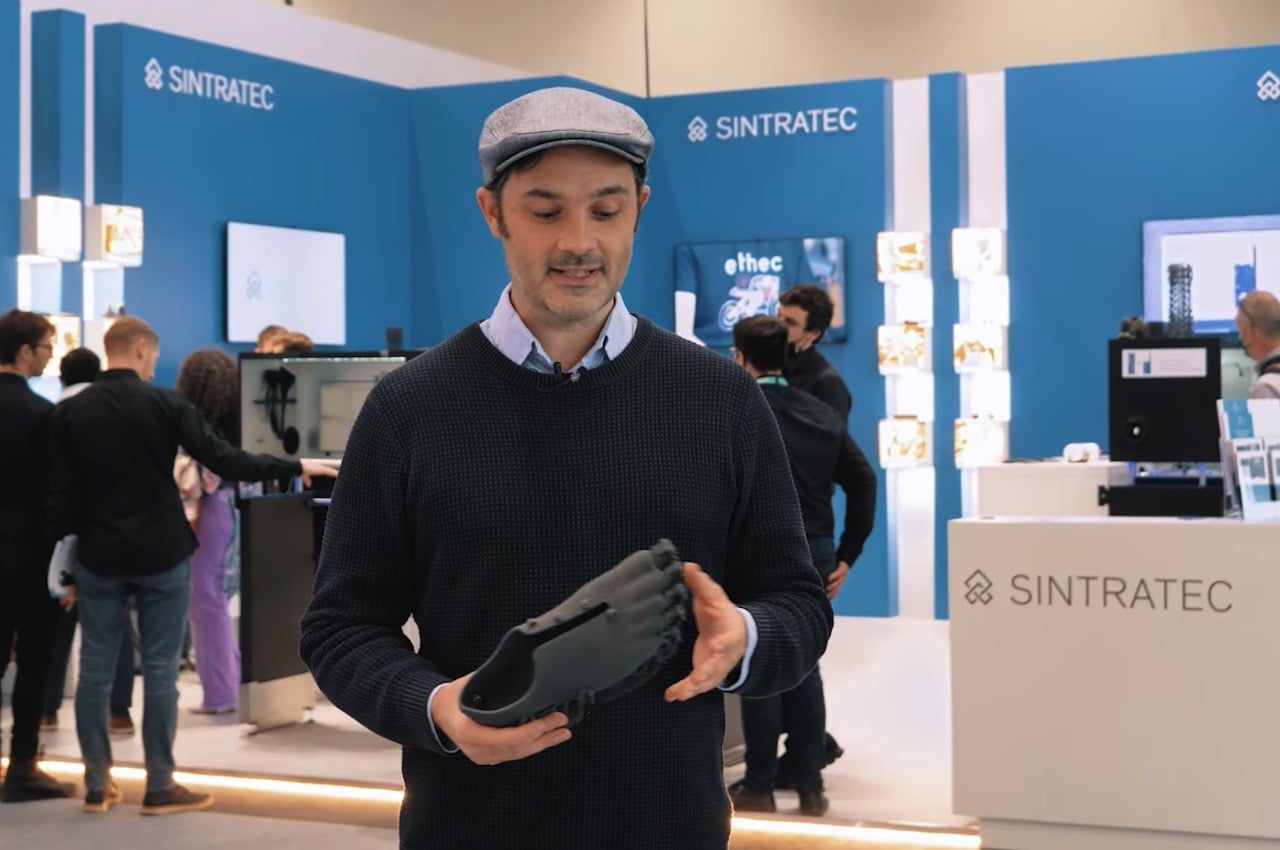
The Cryptide Sneaker was designed by Stephan Henrich for Sintratec. The German architect and designer came up with a pair of full 3D shoes meant to be laser sintered with a flexible TPE material. Using a Sintratec S2 System 3D printer, the shoes were formed and printed.
Why is it noteworthy?
The Cryptide features a sole with an open design. The designer said it was made possible by SLS production (Selective Laser Sintering) and a material called Sintratec TPE elastomer. Simply put, SLS is an additive manufacturing that takes advantage of a laser to sinter particles into a more solid 3D structure. Henrich and Sintratec worked together to bring the sneaker design into reality.
What we like
- The size and shape can adapt to the foot of the wearer
- They remind us of the Adidas Futurecraft 4D!
What we dislike
- They don’t rate high on aesthetics + style
- The shoes will leave freaky footprints
2. Peugeot’s Storage Inserts
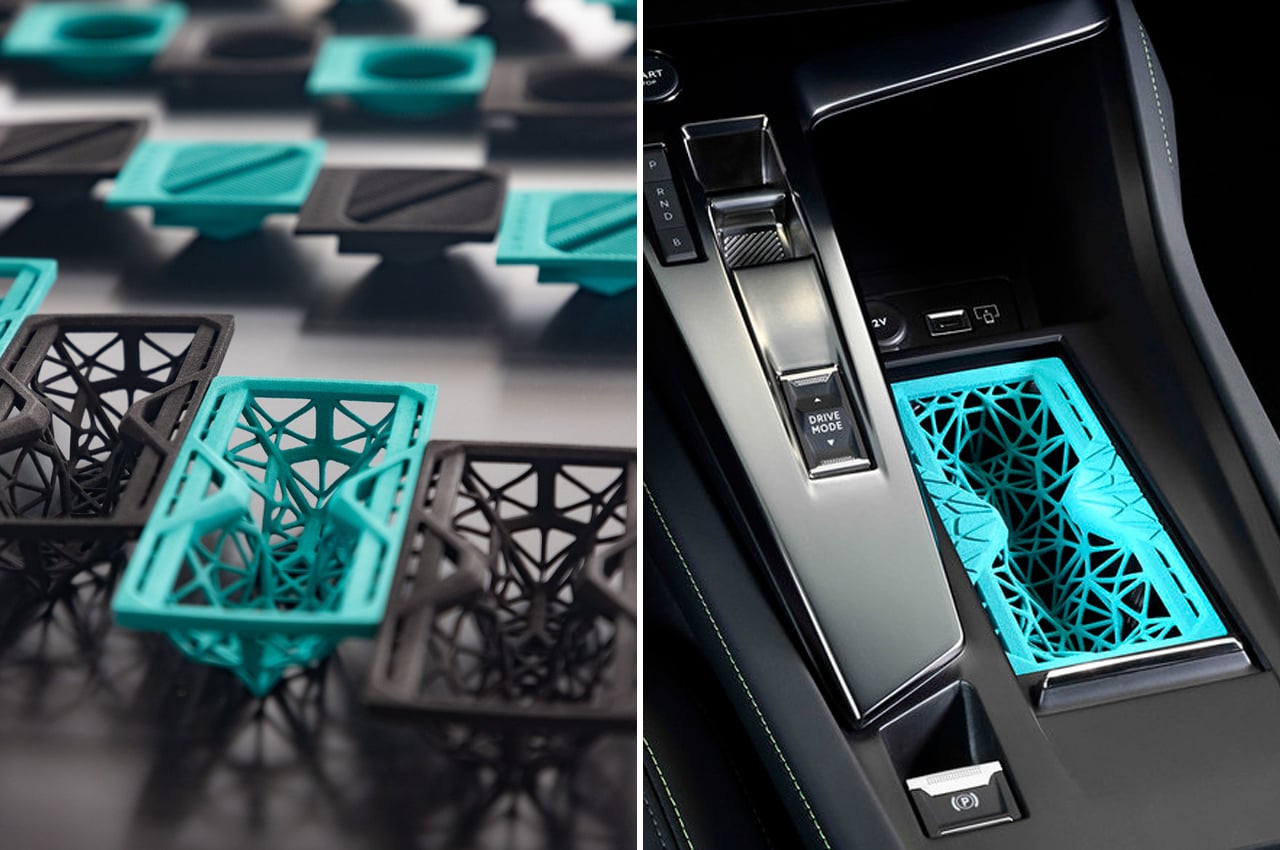

Peugeot has developed storage inserts for their new 308 models that are 3D-printed from a flexible filament using innovative 3D-printing technology. French automobile brand Peugeot is known for its catalog of unique, well-made cars. The new 308 model from Peugeot is an update on the brand’s 3008 SUV, the team of designers gave the new generation a smaller and sportier look.
Why is it noteworthy?
Starting with a new flexible polymer, Peugeot uses innovative 3D-printing technology to create sunglasses holders, cup holders, and phone/cardholders to fit into the 308’s center console. In collaboration with HP Inc., Mäder, and ERPRO, the Peugeot team used the new HP Multi Jet Fusion (MJF) 3D printing technology to format and produce their line of accessories.
What we like
- The 3D-printed accessories are constructed from Ultrasint TPU, or Thermoplastic Polyurethane, a type of filament with elastic properties like rubber, yet durable like plastic
- The custom-fitted storage inserts carry an array of different functions, from a phone holder to a sunglasses case
What we dislike
- Not created from the most eco-friendly materials
3. Wabo


Wabo is a collection of hand boards that are created from plastic waste produced from 3D-printed prototyping. Eight million pieces of plastic make their way into the ocean on a daily basis. That’s a lot of plastic. While some brands commit themselves to gimmicky sustainable practices that have more to do with marketing than carbon-neutral manufacturing, other brands learn how to make something out of the plastic waste they produce.
Why is it noteworthy?
The multidisciplinary design studio Uido Design is a studio known for its catalog of 3D printable product designs and its team is doing something about the waste they produce during the design process. Shredding the plastic waste produced from 3D printing into bits and pieces, Uido Design uses the waste to create hand boards for users to ride the ocean waves.
What we like
- The hand boards are handcrafted
What we dislike
- Not a necessary product, but still fun!
4. Cullan’s 3D-printed shoes
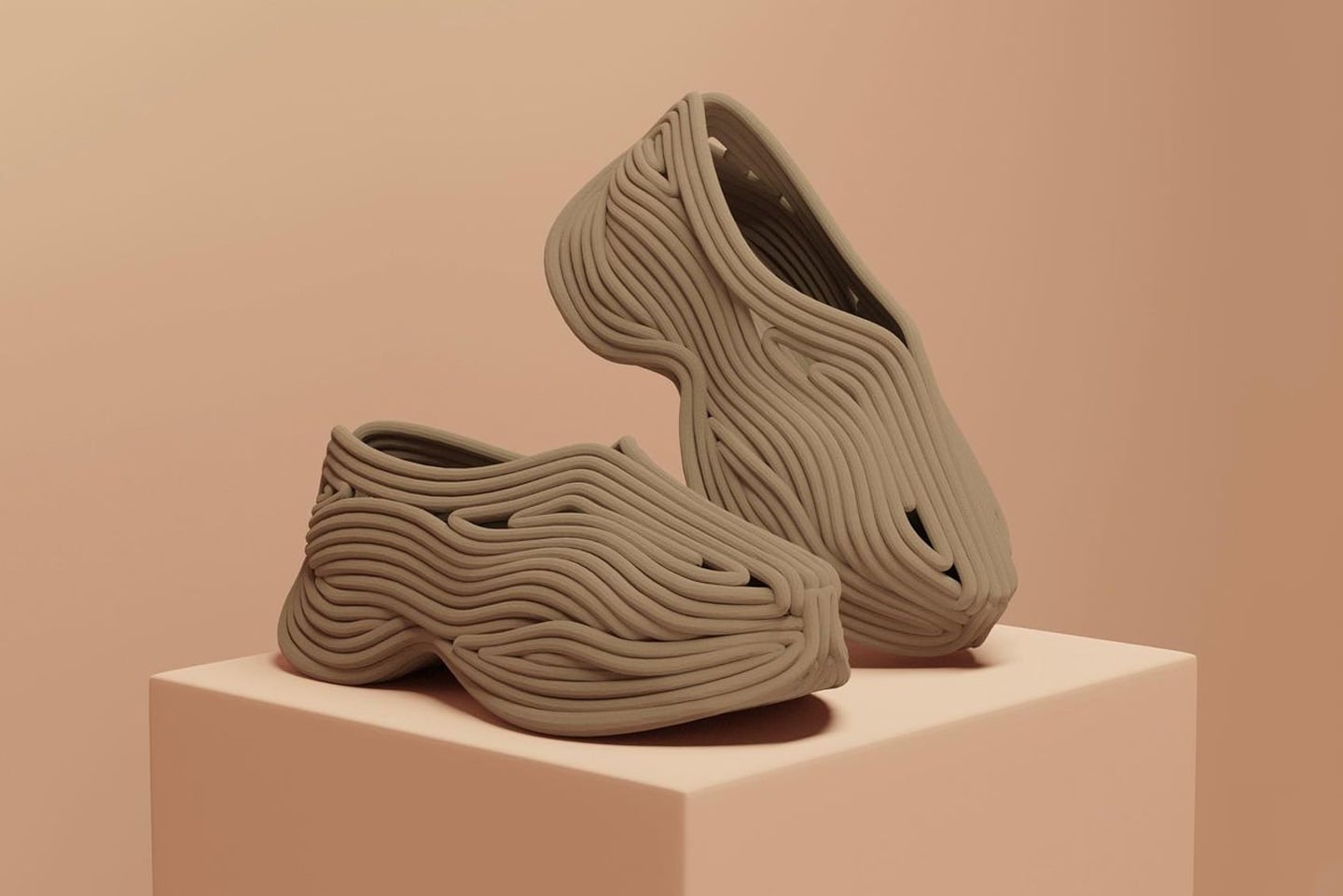

Designed in the metaverse by Cullan Kerner, the shoes embody an aesthetic that’s best described as ‘oddly refreshing’ and the reason is because it doesn’t stick to the constraints of regular shoe design intended for mass production. The process with shoe design is standardized to a great degree – you’ve got pre-set sizes, materials that are readily available, dies for cutting/molding these materials, and processes like stitching or gluing that bring them together
Why is it noteworthy?
Cullan’s design process, however, is completely different. For starters, the shoes were made entirely in Gravity Sketch, a free VR software that allows you to design directly in a 3D space. Cullan designed the shoes almost like a sculptor makes an art piece, creating in 3D space. The shoes are made for 3D printing – a process that still hasn’t been mass-accepted by the shoe industry. The idea is simple – Cullan’s model gets imported into a 3D printing software, and the printer meticulously builds the design layer by layer using a single flexible elastomeric material.
What we like
- Each shoe can be designed to fit you perfectly, and they’re all made to order
- Available as NFTs
What we dislike
- They’re not in production!
5. Novum 3D


Vaude is an outdoor mountain sports brand that develops sustainable outdoor gear because they want younger generations to be able to enjoy the outdoors in the same ways we’ve enjoyed it. Supplying the clothing, accessories, and equipment necessary to take on your next hike, camping trip, or forest bath, Vaude is committed to a responsible and sustainable design process from start to finish and back again. Using innovative 3D printed back pads, Vaude’s latest product is a fully recyclable backpack made from mono-materials.
Why is it noteworthy?
Dubbed Novum 3D, Vaude’s outdoor backpack features a honeycomb construction that ensures maximum stability while keeping the materials needed for production to a minimum. Each component of the backpack, from the straps to the packsack and even the honeycomb back pads is 3D printed from 100% thermoplastic material (TPU). Each component of the Novum 3D is also fully removable and recyclable, taking a big step towards a circular economy.
What we like
- Sustainability remains at the forefront of Vaude’s design principles
- This type of construction offers us the highest stability with the least amount of material
What we dislike
No complaints!
6. Alive


Alive is a customizable, 3D-printed wheelchair for dogs suffering from joint-related body ailments. As our dogs grow older, age-related body issues, such as arthritis, hip dysplasia, and paralysis make it difficult to enjoy life. When even moving feels hard, aging dogs are less likely to spend time with family members and take care of bodily needs, leading to psychological stress.
Why is it noteworthy?
While technical accessories and equipment do exist to offer some relief, antiquated building methods make it hard for dogs to adapt to wheelchairs and other assistive appliances. Revolutionizing the canine assistive appliance game, industrial designer Martin Tsai conceptualized a wheelchair for dogs called Alive that can be 3D printed to fit your dog’s body data and needs.
What we like
- It’s a one of a kind design that provides aid to dogs suffering from joint-related body ailments
- Uses 3D scans of the dog’s body data to generate an optimized wheelchair for each dog
What we dislike
No complaints!
7. The Sopp table lamp
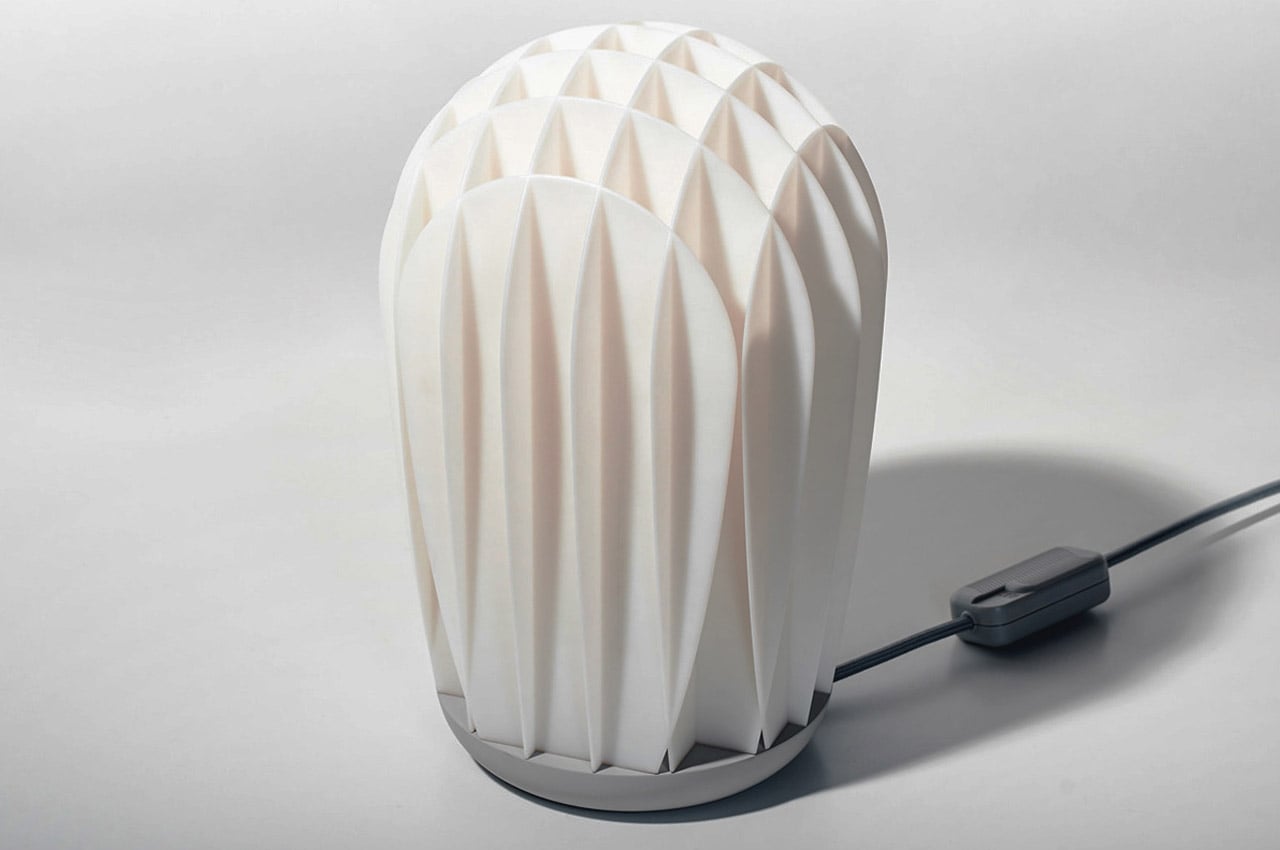
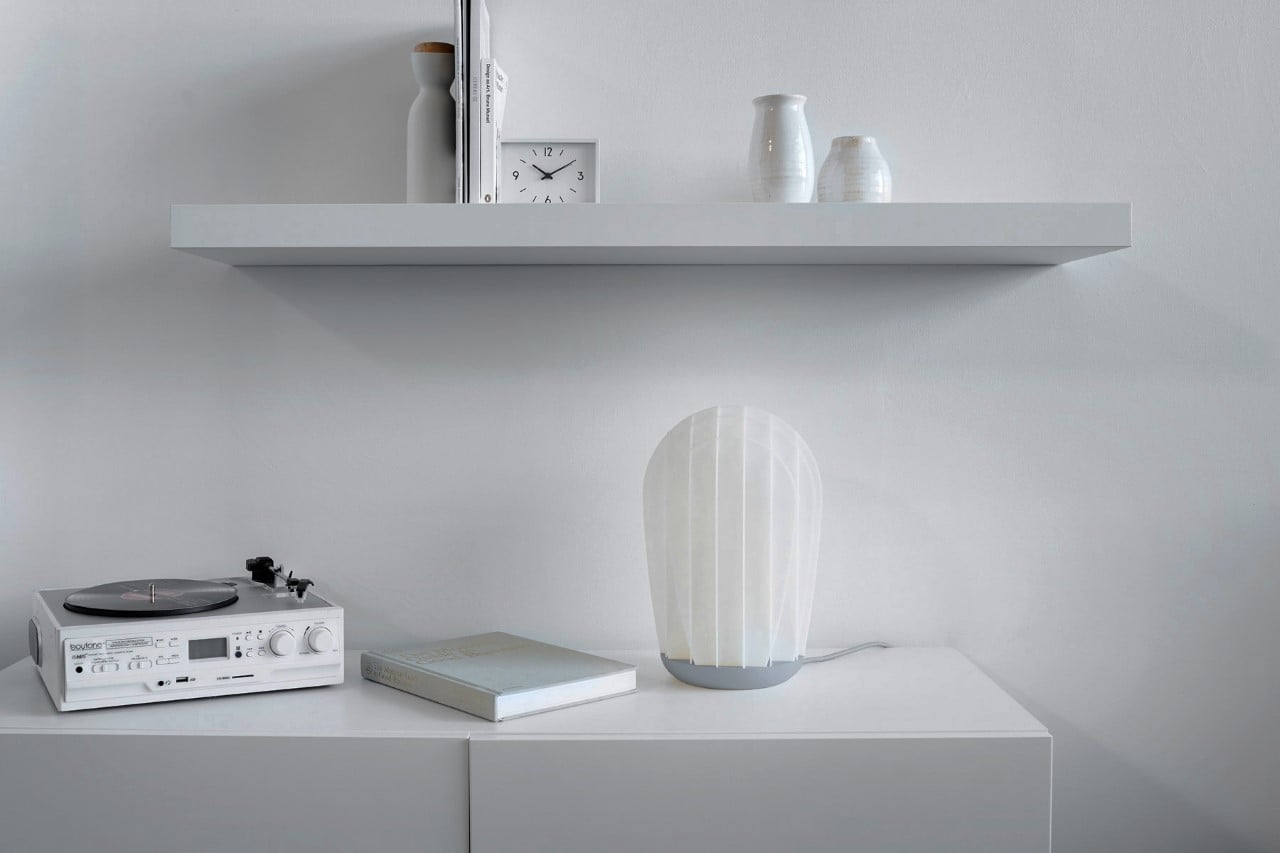
Looking quite like some Zaha Hadid-inspired architecture on your table, the Sopp table lamp by Max Voytenko for Gantri uses Gestalt’s visual laws to look like it has mass, while the lamp itself is made from what seems like entirely crisscrossing 2-dimensional surfaces. The Sopp is a paradoxical masterpiece, inspired by seemingly opposing disciplines: natural forms and modern architecture”, Voytenko writes. “Who knew minimalism could be so mesmerizing?”
Why is it noteworthy?
Kyiv-based Voytenko’s design philosophy of ‘less is more’ shines through wonderfully with Sopp. There’s no voluminous mass to the lampshade. It’s entirely lattice-based, but still has its own 3D mass shining through the twelve 2D planes that intersect each other. The abstract parachute-shaped design rests on a flat base, which houses the lamp’s internal LED light along with its electronics. Both the lamp and base are 3D printed at Gantri’s San Francisco factory using their proprietary Gantri Plant Polymer, a special bio-based material that has a signature matte finish that gives each Gantri lamp a premium appeal.
What we like
- There’s no voluminous mass to the lampshade
- Entirely lattice-based
What we dislike
- Seems quite delicate, as if it could easily be damaged
8. Greenfill3d

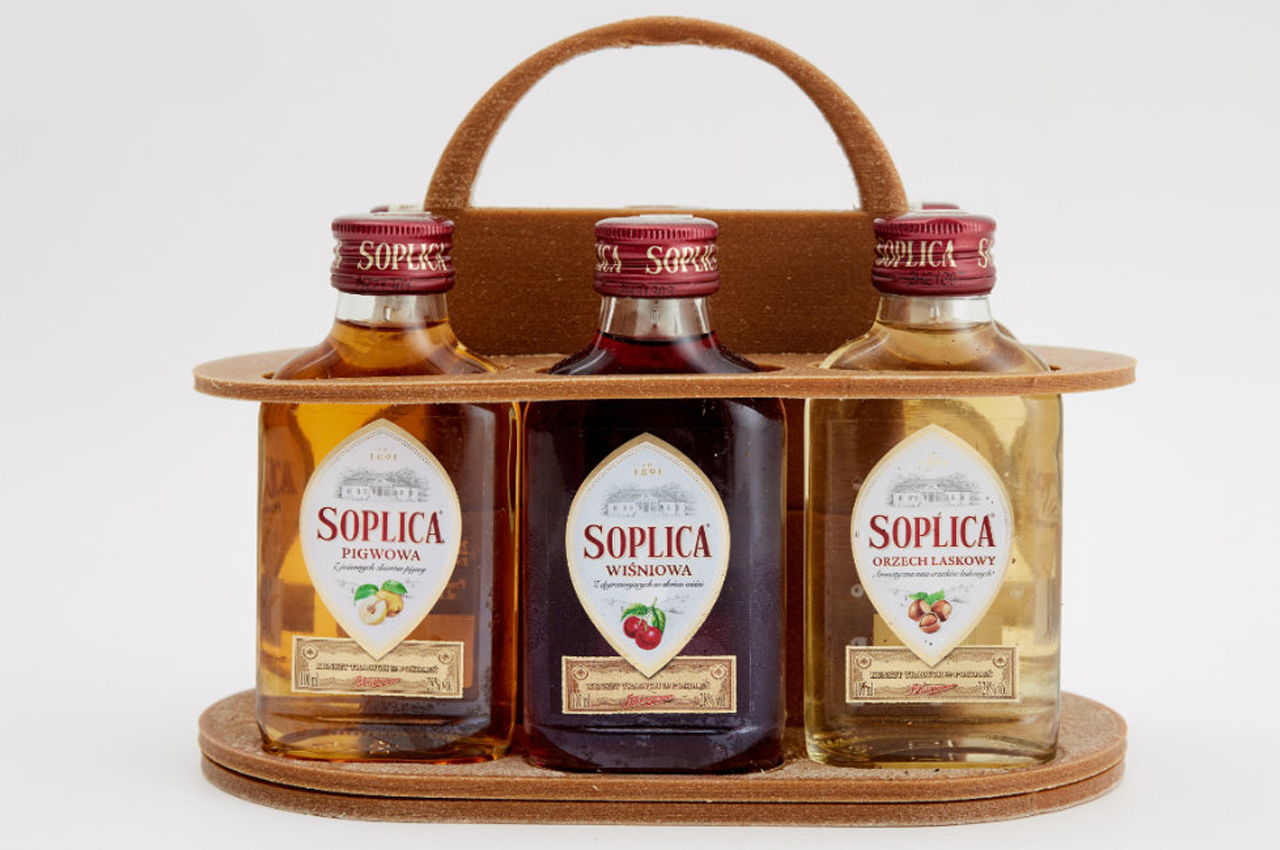
Greenfill3d is a Polish home goods and furniture company that uses wheat bran waste to 3D print home goods items like storage compartments and advertising racks. One of the easiest ways we can reduce our personal carbon footprint is by taking a look at the build of items we use on a daily basis. A closer look reveals that many of the products we surround ourselves with are made from materials that aren’t so great for the landfill. Designed for obsolescence, most of these plastic-based products end up in landfills where they might remain for years to come.
Why is it noteworthy?
Hoping to change the way we consume home goods and everyday products, the Polish company Greenfill3d produces items that are made from biodegradable or bio-compostable materials in accordance with the ideas of zero-waste and the circular economy.
What we like
- Each item that comprises Greenfill3d’s home goods collection is composed of multiple parts that are 3D-printed individually
- Made from sustainable materials
What we dislike
No complaints!
9. The Ermis Chair
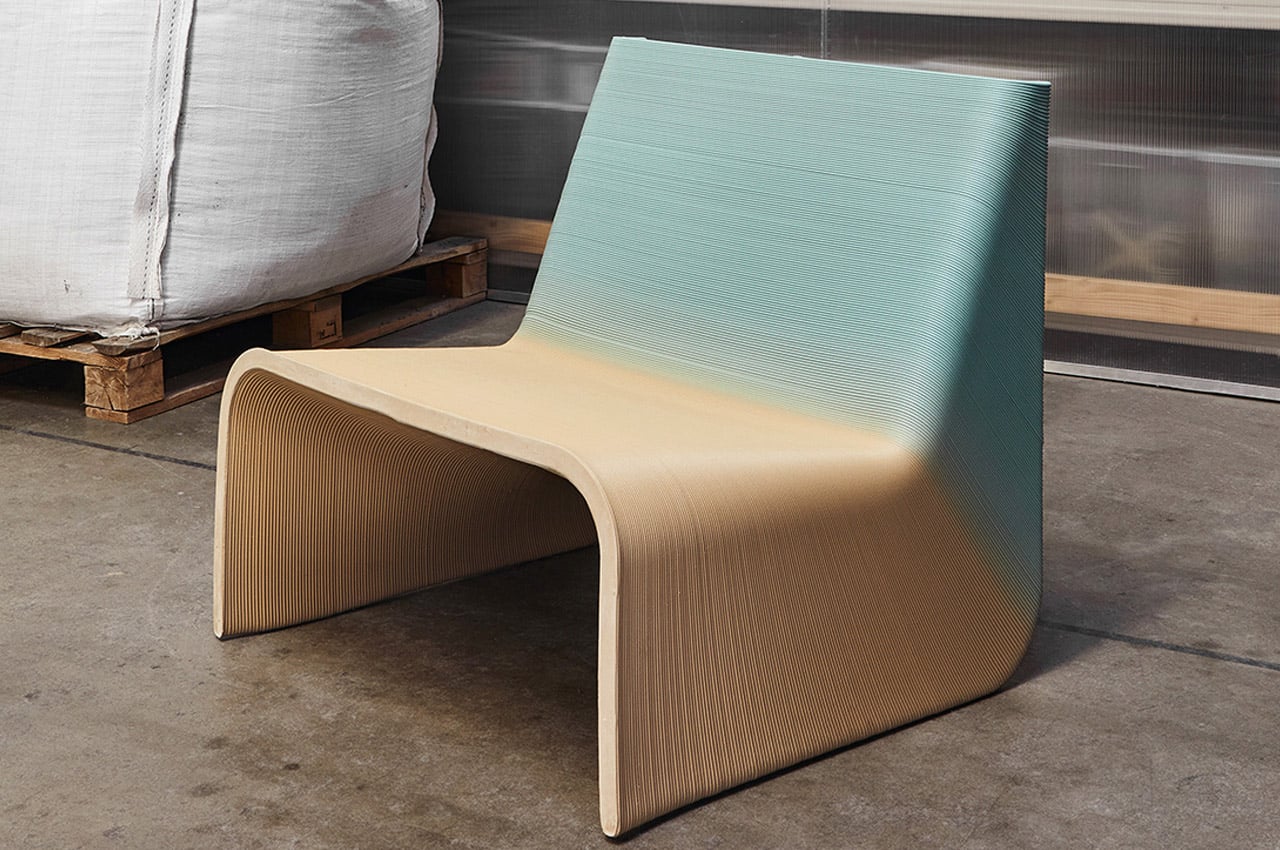
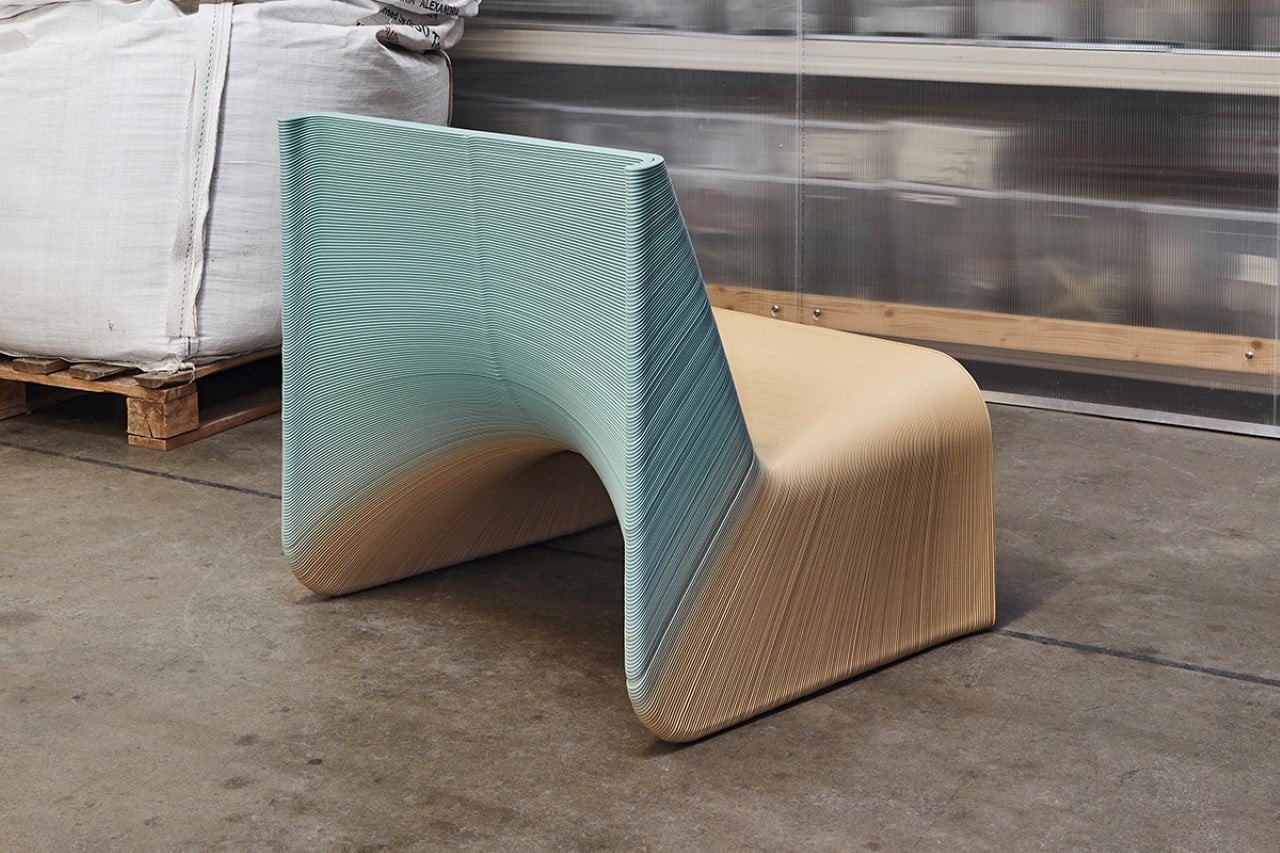
The Ermis Chair by The New Raw displays the combination of human ingenuity with robotic accuracy to turn plastic waste into robot-aided 3D printed furniture. Armed with large quantities of raw material in the form of plastic waste, The New Raw decided to close the loop and turn it into actual useful products. 3D printing large-scale furniture isn’t something that’s entirely new to the Rotterdam-based design outfit.
Why is it noteworthy?
Determined to not let the waste end up in some landfills, Panos and Foteini decided to repurpose the plastic waste into furniture. The Ermis Chair is a result of that grand experiment, with its uniquely beautiful form and that absolutely gorgeous natural color gradient that comes from the extruded plastic filament gradually changing color through the print.
What we like
- Created from recycled plastic
What we dislike
- As sustainable and pretty as this chair is, we don’t know how comfortable it would be to sit on
10. Angled’s 3D printed headphone stands

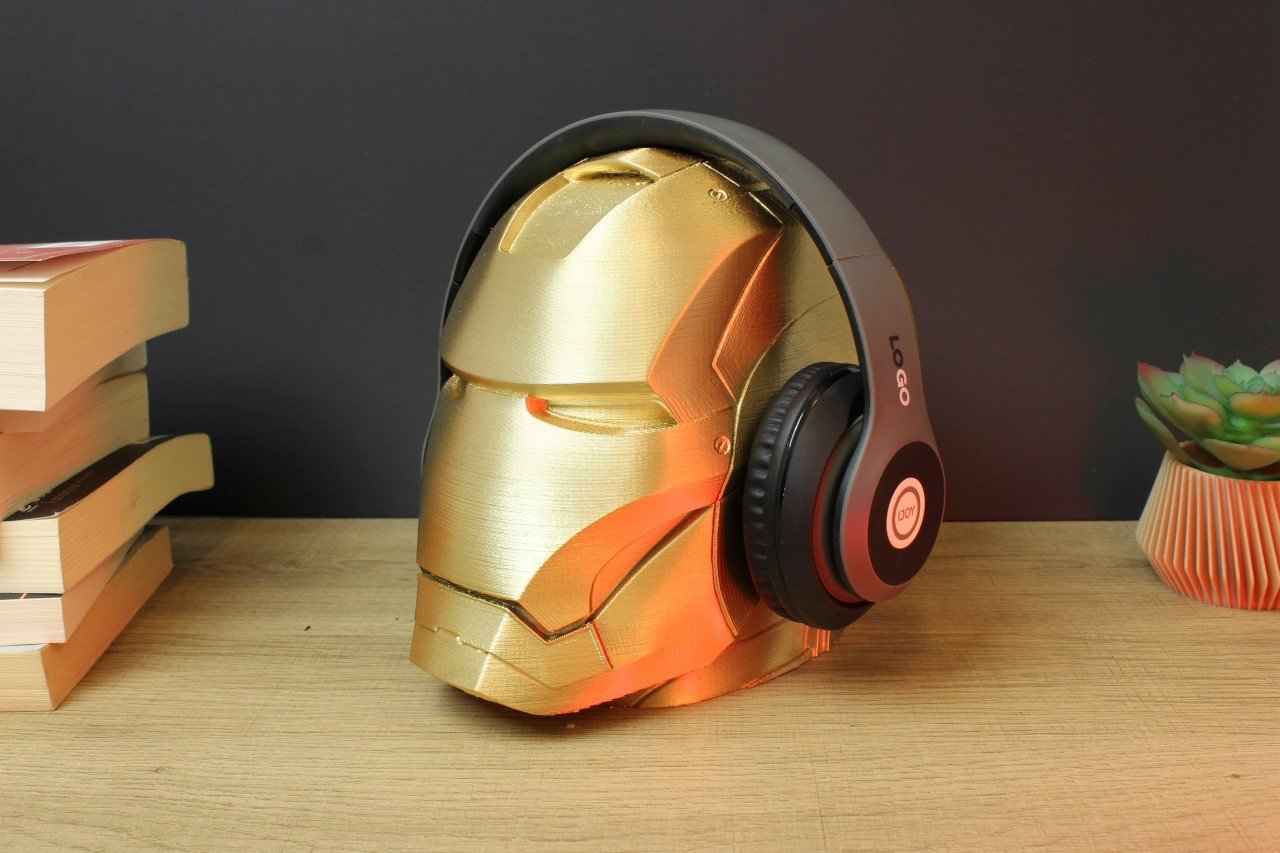
I defy you to find a better place to rest your headphones than on the heads of Iron Man or Loki, or even Thanos. If, however, you’re on the market for an incredibly cool headphone stand, the folks at Angled can easily hook you up. Armed with a fleet of 3D printers, the folks at Angled build some of the most incredible pop-culture-inspired headphone holders (and even gaming controller stands).
Why is it noteworthy?
Based out of the USA, Angled 3D prints each headphone stand out of PLA to order, and offers a wide selection to choose from. Their Marvel collection is incredibly exhaustive, with possibly every main superhero you could imagine. Their golden Iron Man bust remains a personal favorite, although the Loki head (with his elaborate horned headgear), the Spiderman-Venom head, and even the Black Panther head are truly eye-catching, to say the least! Want something less bulky, Angled even has an Iron Man hand to hold your headphones! (Infinity Gauntlet with Stones not included)
What we like
- Shaped after our favorite Avengers!
- Incredibly well-detailed
What we dislike
No complaints!
The post Top 10 3D printed designs to convert you into an advocate of this innovative trend first appeared on Yanko Design.
from Yanko Design

0 Comments